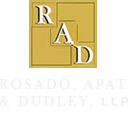The doctrine of practical location may determine your boundary line
New York law recognizes that boundary lines may be established by the acquiescence of neighbors in a certain agreed upon line for a period of 10 years.
Neighbors neither like nor love one another if they become embroiled in a boundary line dispute that quickly escalates into something akin to open warfare. While boundary lines are normally going to be those set forth in the description of property contained in your deed, there are times when the boundary may end up being different than the one reflected by a survey.
In New York, there is a legal principle known as the “doctrine of practical location.” The so-called “practical location” of a boundary results from a long acquiescence by neighbors in a clearly demarcated line understood by them-for over 10 years-as being the actual dividing line of their land. If this acquiescence continues for over 10 years, then regardless of what the deeds says or what a survey ends up determining, this demarcated line can end up being the actual boundary line.
In Jakubowicz v. Solomon, a New York case decided in 2013, the plaintiffs sued the defendant asserting that the defendant’s driveway encroached upon their property.
It was demanded that the driveway be removed. In support of their position that the driveway was located on their property, the plaintiffs relied upon the description of the property lines set forth in the parties’ deeds. The defendant argued that, notwithstanding what the deeds said, a hedgerow and chain-link fence demarcated the true boundary line under the “practical location” doctrine.
A motion for a summary judgment was made by the plaintiffs who argued that, based upon the deeds, they were entitled to a decision in their favor without the necessity of a trial. The trial court found that a trial was warranted. A New York appellate court reviewed the decision and concluded that the trial court was correct.
The Appellate Court found that the evidence suggested that the parties’ predecessors in interest may well have acquiesced in making the location of the hedgerow and chain-link fence the boundary line. Accordingly, the appellate court sent the matter back to the lower court for a trial. The Jakubowicz case demonstrates that there are times when neighbors’ acquiescence may supersede boundary lines established by a survey.
Importantly, always stay calm and polite when discussing a boundary line issue with a neighbor. The doctrine of practical location may determine your boundary line.
Legal assistance
If you, a friend or a family member should ever find themselves in a boundary dispute situation, it is important to get good legal advice early. You should therefore contact Richard H. Apat Esq. of the law firm of Rosado, Apat and Dudley LLP in order to get good, clear and experienced legal advice in your boundary dispute, adverse possession or easement or action.
Keywords: boundary line dispute, doctrine of practical location, New York









